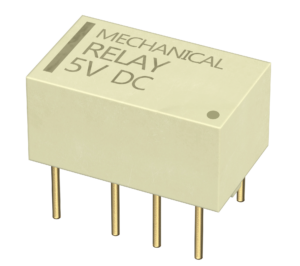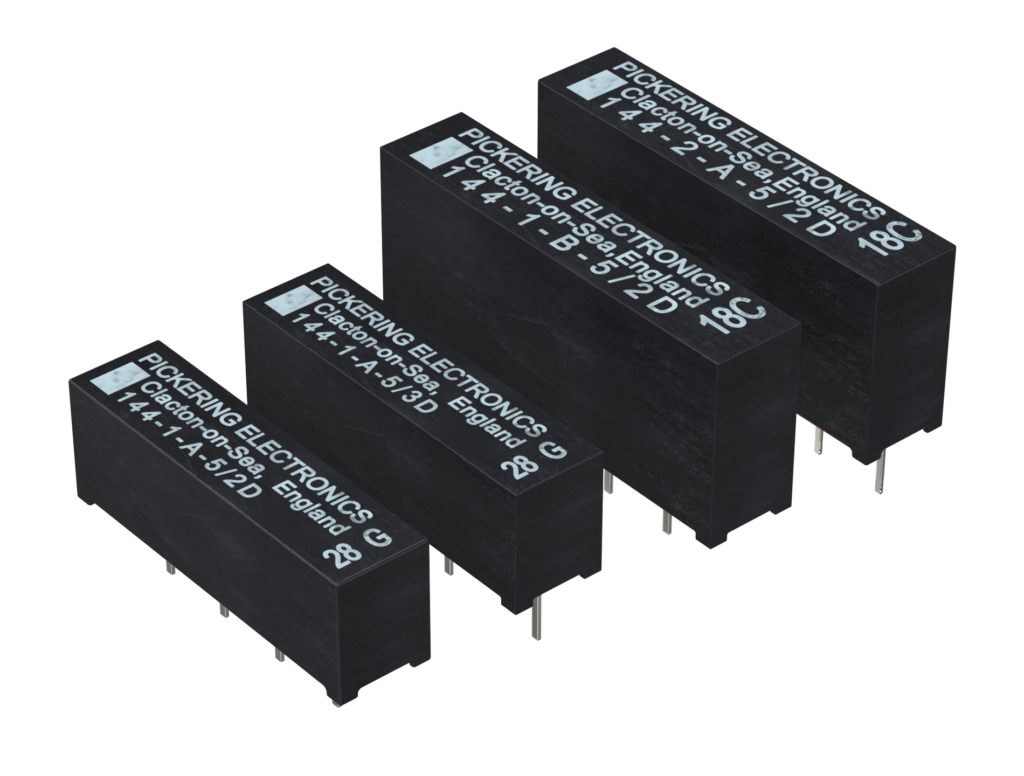Comparing EMRs with Reed Relays
Electromechanical relays may be adequate, but are they the ideal solution for switching in your application? In many cases reed relays offer superior performance and higher reliability whilst saving space on your circuit boards. Continue reading for more differences and see if reed relays can enhance your designs.
1. Enhanced Reliability
Unlike electromechanical relays (EMRs) with moving parts prone to wear and tear, our reed relays feature a simple, sealed construction, ensuring unparalleled reliability and longevity. EMRs are frequently contained within plastic casings, providing a degree of safeguarding. However, with time, the relay contacts can become susceptible to external contaminants, emissions from the plastic enclosure, as well as penetration of oxygen and sulfur, leading to degradation. Oxygen in particular can be an issue due to contact oxidation, which can result in degradation in low signal level switching performance.
The lifespan of a reed relay is typically 10-100 times that of an EMR. Say goodbye to frequent maintenance and downtime, say hello to reliability.
2. Faster Switching Speeds
Experience lightning-fast response times. The inherent smaller design of reed relays allows for rapid switching, outperforming EMRs and meeting the demands of high-speed applications such as test equipment and those in aerospace and defense, for example. Due to Pickering’s focus on miniaturization, our relays operate particularly fast compared to industry standards. Even our largest relays operate at less than 3ms, whilst our smallest parts operate as fast as 0.08ms.
3. Compact Size, Big Impact:
Size matters, especially in space-constrained applications. Our reed relays boast a compact form factor, offering superior packing density without compromising on performance. Our range of high power reed relays rival the power specifications of electromechanical relays, whilst enjoying all the benefits that Pickering has to offer. Find out more on the Top 10 key benefits of working with Pickering here.
If size is an important factor for your application, our Ultra high-density reed relay range may be of interest. Taking up a board space of just 4mm x 4mm, Pickering can offer the smallest PCB footprint in the industry.
4. Low Power Consumption:
Bid farewell to unnecessary power drain with our reed relays. Unlike EMRs, which may consume more power, our reed relays are designed for efficiency, ensuring optimal performance while minimizing energy costs—a win-win for your applications.
5. Superior Performance in Harsh Environments:
When it comes to durability, our reed relays are second to none. Built to withstand extreme temperatures, high vibration environments, and other challenging conditions, they outperform EMRs, delivering consistent performance and reliability where others may falter.
Recommended Reed Relays

High Power Reed Relays
These relays have switching voltages up to 6kV and standoff voltages up to 8kV. Maximum switching currents up to 200W and 3A. High coil resistances available up to 6000Ω Available forms: 1 Form A, Form B and Form C contact configurations.
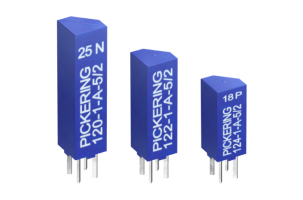
Ultra High Density Reed Relays
These relays have a maximum switch current of 1A (up to 20W), and the maximum carry current is 1.2A. Fast operate and release times (as low as 80μs or less) make these relays suitable for high-speed test systems. Body dimensions from (W x H x D): 3.9 x 9.5 x 3.9mm. Available forms: 1 Form A contact configuration.

High Density Reed Relays
These relays have a maximum switch current of 1A (up to 20W), and the maximum carry current is 1.2A. Switches feature sputtered ruthenium contacts for long life and high reliability. Body dimensions from (W x H x D): 6.6 x 9.5 x 3.7mm. Available forms: 1 Form A, 1 Form A Coax, 2 Form A, 1 Form B, and 1 Form C contact configurations.
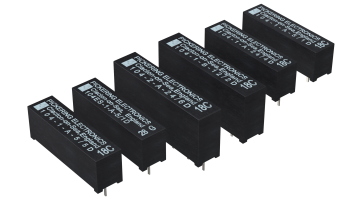
Miniature High-Voltage Reed Relays
These relays have switching voltages up to 1.5kV and standoff voltages up to 5kV. The maximum switch current is 1A (up to 25W) and the maximum carry current is 1.5A. High coil resistance options (up to 6.8kΩ). Thermal EMF devices are between 3 and 10μV. Relays can endure temperatures as high as 150°C if requested. Body dimensions from (W x H x D): 12.5 x 6.6 x 3.7mm. Available forms: 1 Form A, 2 Form A, and 1 Form B contact configurations.
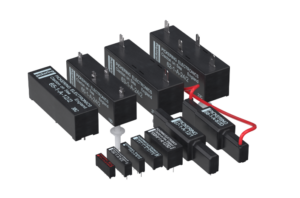
High Voltage Reed Relays
These relays have switching voltages up to 12.5kV and minimum standoff voltages up to 20kV. The maximum switch current is 3A (up to 200W) and the maximum carry current is up to 5A. Option of PCB pins, chassis, PCB mounting, and flying leads. Body dimensions from (W x H x D): 58.4 x 19.0 x 12.6mm. Available forms: 1 Form A, 1 Form B, and 1 Form C contact configurations.
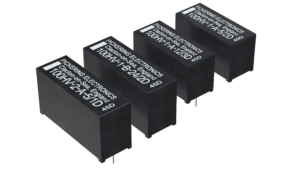
High Coil Resistance Reed Relays
These relays have a maximum switch current of 1A (up to 20W), and the maximum carry current is 1.2A. Featuring high coil resistances (up to 6kΩ), devices are ideal for portable instruments. Body dimensions from (W x H x D): 8.13 x 15.24 x 4.8mm. Available forms: 1 Form A, 2 Form A, 1 Form B, and 1 Form C contact configurations.
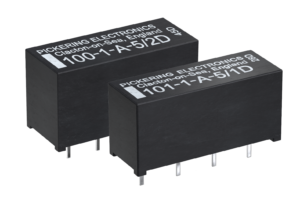
Low Thermal EMF Reed Relays
These relays have a maximum switch current of 1A (up to 20W), and the maximum carry current is 1.2A. Devices feature low thermal EMF (around 1μV or less) and low power consumption. Body dimensions from (W x H x D): 20.1 x 9.4 x 7.4mm. Available forms: 1 Form A, 2 Form A, 1 Form B, and 1 Form C contact configurations.
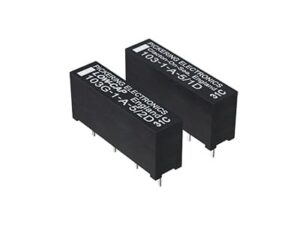
Low Capacitance Reed Relays
These relays have a maximum switch current of 1A (up to 20W), and the maximum carry current is 1.2A. Ultra-low capacitance levels of typically 0.1pf, compared to typically 2.5pF for a standard device. Body dimensions from (W x H x D): 19.1 x 8.1 x 4.8mm. Available forms: 1 Form A contact configuration.
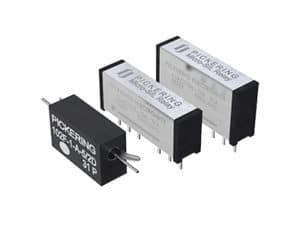
Coaxial Reed Relays
These relays have a maximum switch current of 1A (up to 20W), and the maximum carry current is 1.2A. Devices with 50 and 75Ω coils are suitable for up to 5GHz, making them ideal for RF Signal Switching, RF switched tunable filters, and High-Speed Digital Switching. Available in thru-hole and SMT. Body dimensions from (W x H x D): 12.5 x 6.6 x 3.7mm. Available forms: 1 Form A and 1 Form B
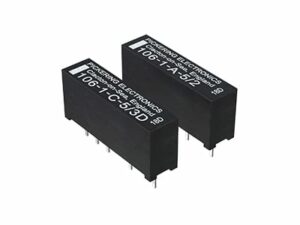
Industry Standard Size Reed Relays
These relays have a maximum switch current of 1A (up to 20W), and the maximum carry current is 1.2A. Featuring superb contact resistance stability and ultra-high insulation resistance. Body dimensions from (W x H x D): 19.1 x 7.6 x 4.8mm. Available forms: 1 Form A, 2 Form A, 1 Form B, 1 Form C, and 2 Form C contact configurations.


